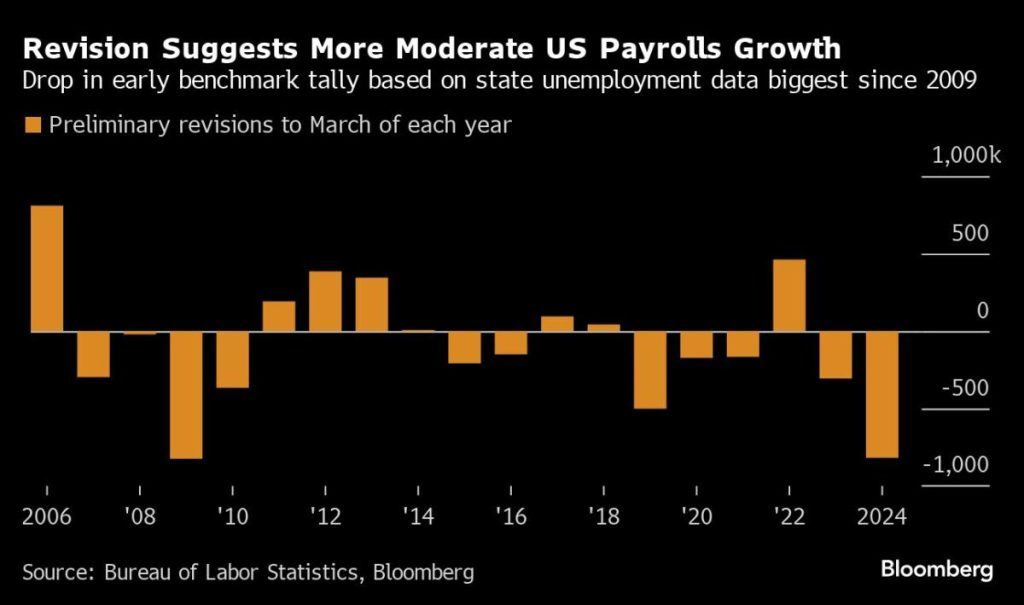
(Bloomberg) — Wall Street traders worried about the potential impacts of US tariffs on inflation didn’t get much relief from economic data that only underscored concerns over price pressures, reinforcing speculation the Federal Reserve will be in no rush to cut interest rates.
Most Read from Bloomberg
Stocks erased this week’s gains, with the S&P 500 down about 1%. President Donald Trump said he will announce reciprocal levies next week in an escalation of his trade war. United States Steel Corp. sank as he indicated Nippon Steel Corp. is considering investing in the company instead of an outright purchase. Equities came under pressure after data showed a slide in consumer sentiment amid concern over inflation. Mixed jobs figures highlighted a moderating — yet healthy — labor market, and a jump in wages. Bonds fell. Megacaps slid amid a disappointing outlook from Amazon.com Inc.
The latest economic readings help explain why policymakers have signaled they aren’t in a hurry to lower borrowing costs after three rate cuts last year. While traders are still betting the next move will be a reduction, they are only fully pricing one in September.
“The broader picture is still one of labor market resilience and sustained wage pressures,” said Seema Shah at Principal Asset Management. “This simply gives the Fed little reason to cut policy rates immediately.”
The Nasdaq 100 lost 1.3%. The Dow Jones Industrial Average slid 1%. A gauge of the “Magnificent Seven” megacaps sank 2%. The Russell 2000 dropped 1.2%. Amazon tumbled about 4%. Roblox Corp. is part of an active investigation by the US Securities and Exchange Commission, according to information obtained by Bloomberg News.
The yield on 10-year Treasuries advanced five basis points to 4.49%. The Bloomberg Dollar Spot Index rose 0.2%.
Nonfarm payrolls increased by 143,000 last month after upward revisions to the prior two months. Other revisions only carried out once a year weren’t as severe as once thought — job gains averaged 166,000 a month last year, a slowdown from the initially reported 186,000 pace.
The unemployment rate was 4.0% — the survey used to produce the number incorporated separate revisions to reflect a new population estimate at the start of the year, which makes the figure incomparable to prior months. Meantime, hourly wages climbed 0.5%.



